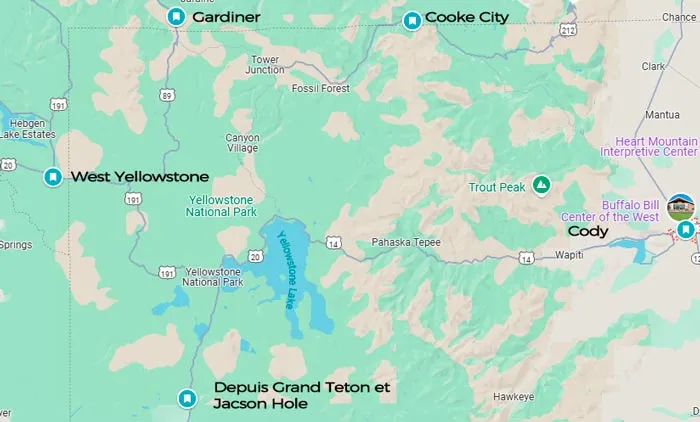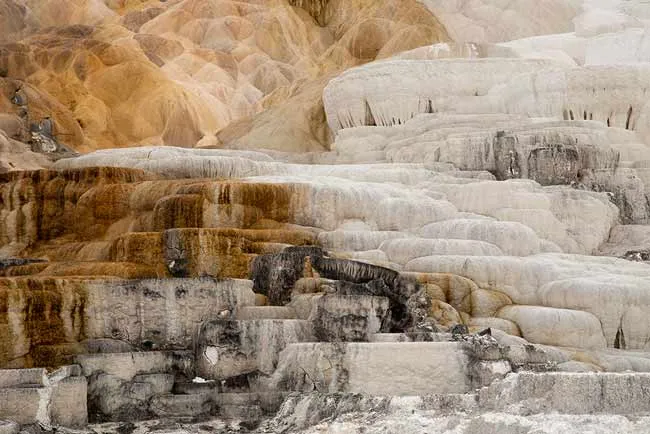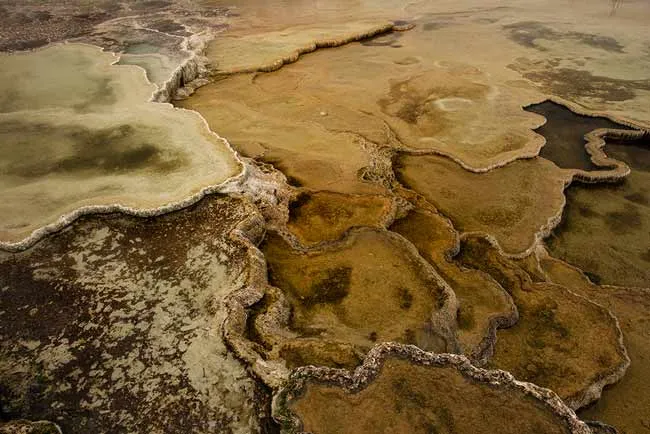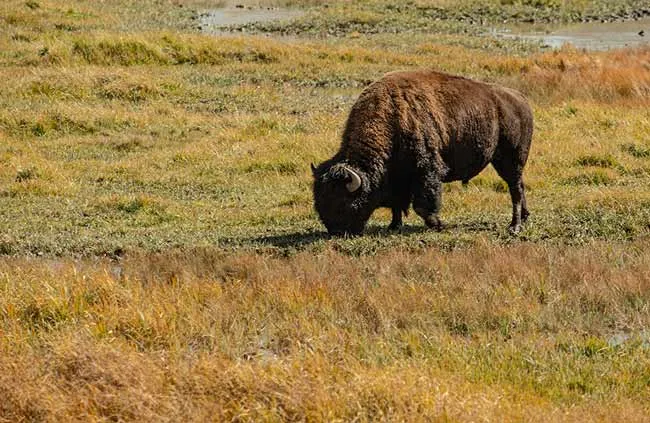Wyoming, with its pristine and majestic beauty, is a dream destination for nature lovers. Especially in winter, when snow blankets the rocky mountains and pine forests, it takes on a serene and magical charm. However, to fully enjoy a winter trip to Wyoming, especially exploring Yellowstone National Park in the icy season, careful preparation is crucial. This article will provide you with the most useful information and tips for a safe and memorable winter adventure in Wyoming.
I. Understanding Wyoming Winter Weather
Winter in Wyoming is much harsher than you might imagine. Temperatures can drop very low, especially at night and in high mountain areas. In Yellowstone National Park, the average winter temperature ranges from -20°C to -5°C (-4°F to 23°F), but it can get even colder. Heavy snowfall is frequent and prolonged, covering most of the state, creating stunning white landscapes but also posing challenges for travel and daily life.

Winter weather in Wyoming is unpredictable and can change rapidly. Blizzards, strong winds, and freezing temperatures are common weather phenomena. Before starting your trip, you need to closely monitor the weather forecast to plan accordingly. Specialized weather websites and apps for mountainous regions will provide more detailed and accurate information.
II. Essential Clothing and Luggage for Wyoming Winter
To cope with the harsh weather, clothing plays a pivotal role in ensuring comfort and safety during your winter trip to Wyoming. The most important principle is to dress in layers.
1. Base Layer (Moisture-Wicking Layer): Choose thermal underwear made from materials like merino wool or synthetic fabrics. They wick away sweat and retain warmth better than cotton. Long-sleeved thermal tops and bottoms are ideal choices.
2. Mid Layer (Insulating Layer): This layer is designed to trap body heat. Down jackets or fleece jackets are popular options. You can bring multiple mid-layers to adjust warmth depending on the temperature.
3. Outer Layer (Windproof and Waterproof Layer): Waterproof and windproof jackets and pants are indispensable to protect you from snow, rain, and cold wind. Choose one with a hood for better coverage.
In addition to clothing, you also need to pay attention to accessories:
- Gloves or Mittens: It is advisable to bring both types for flexible use in different activities. Fingerless gloves allow for easier operation when taking photos or using your phone, while mittens provide better warmth in extremely cold weather.
- Wool Hat or Beanie: A hat helps keep your head and ears warm, which are the most heat-sensitive parts of the body.
- Scarf or Buff: Protect your neck and face from cold wind and snow.
- Thermal Socks: Bring multiple pairs of thick socks, made of wool or synthetic materials, to keep your feet warm and dry.
- Specialized Snow Boots: Waterproof boots with thermal lining and non-slip soles are mandatory for safe movement on snow and ice.

Other essential items to bring:
- Sunglasses: Sunlight reflecting off snow is very strong and can be harmful to your eyes. Sunglasses protect your eyes from UV rays and reduce glare.
- Sunscreen and Lip Balm: Skin and lips are prone to dryness and chapping in cold and dry weather.
- Flashlight or Headlamp: Necessary when moving around in the evening or in low light conditions.
- Thermos: Keep hot drinks to take with you when sightseeing, helping you stay warm from the inside out.
- First-Aid Kit: Includes basic medical supplies, personal medications, and pain relievers.
III. Winter Transportation in Wyoming
Driving is the most common mode of transportation in Wyoming, but winter driving can be challenging due to snowfall and slippery roads. If you are driving yourself, make sure your vehicle is well-equipped for winter conditions:
- 4-Wheel Drive (4WD) or All-Wheel Drive (AWD) Vehicle: This type of vehicle provides better traction on slippery roads.
- Winter Tires: Specialized winter tires offer better grip than regular tires in cold and snowy conditions.
- Tire Chains: Carry tire chains and know how to install them in case the road is too slippery.
- Vehicle Emergency Kit: Includes jumper cables, flashlight, small shovel, warm blanket, snacks, and drinking water.
Tips for winter driving in Wyoming:
- Drive Slowly and Carefully: Reduce speed, maintain a safe distance from the vehicle in front, and avoid sudden braking or steering.
- Check Road Conditions Before Traveling: Use traffic information apps or websites to get updates on road conditions and weather warnings.
- Avoid Driving at Night or in Bad Weather Conditions: Limited visibility and slippery roads increase the risk of accidents.
- Fill Up Your Gas Tank Before Traveling: Gas stations can be far apart in rural Wyoming.

Getting Around Yellowstone National Park in Winter:
Some roads in Yellowstone are closed in winter due to heavy snowfall. Only the North Entrance (Gardiner, Montana) is open year-round to cars. Other entrances may be open to snowmobiles and specialized snowcoaches.
Within the park, you can travel by:
- Snowmobile: This is the most popular way to explore Yellowstone in winter. You can rent snowmobiles or join guided tours.
- Snowcoach: This type of vehicle is specially designed to travel on snow and ice. Snowcoaches are a comfortable and safe option for those who do not want to drive snowmobiles themselves.
- Snowshoeing and Cross-Country Skiing: Many areas in Yellowstone have trails for winter hiking. Snowshoeing or cross-country skiing is a great way to enjoy the natural beauty and tranquility of the park.
IV. Winter Activities in Wyoming and Yellowstone
Winter in Wyoming and Yellowstone offers unique and different travel experiences compared to summer.
Winter Activities in Yellowstone:
- Geyser and Hot Spring Viewing: The sight of steam rising from geysers and hot springs against the white snow creates a magical beauty. Old Faithful geyser still erupts regularly in winter.
- Wildlife Watching: Winter is a good time to observe wildlife such as bison, wolves, elk, and foxes. They often congregate in lower areas in search of food.
- Snowshoeing: Explore snow-covered trails and enjoy the tranquility of nature.
- Cross-Country Skiing: Yellowstone has many cross-country ski trails suitable for all skill levels.
- Visiting Mammoth Hot Springs: The white travertine terraces of Mammoth Hot Springs become particularly impressive when covered with a thin layer of snow.
- Snowmobiling or Snowcoach Tours: Join guided tours to explore different areas of the park safely and conveniently.

Other Winter Activities in Wyoming:
- Skiing & Snowboarding: Wyoming has many world-renowned ski resorts such as Jackson Hole Mountain Resort and Grand Targhee Resort.
- Ice Fishing: Frozen lakes and rivers are ideal locations for ice fishing.
- Winter Festivals: Many towns in Wyoming host winter festivals with fun activities, parades, and unique cuisine.
- Natural Hot Springs Bathing: Relax in the warm waters of natural hot springs amidst the snowy landscape.
V. Winter Travel Safety Tips for Wyoming
Winter travel in Wyoming can offer wonderful experiences, but it also carries certain risks.
1. Altitude Sickness: Wyoming has a relatively high average elevation, especially the Yellowstone area. Altitude sickness can occur when you ascend to high altitudes too quickly. Symptoms include headache, dizziness, nausea, and fatigue. To prevent it, ascend gradually, drink plenty of water, and avoid alcohol and caffeine.
2. Hypothermia & Frostbite: Freezing temperatures can lead to hypothermia and frostbite if you are not dressed warmly enough or stay outdoors for too long. Always dress warmly, stay dry, and watch out for signs of hypothermia (shivering, confusion, fatigue) and frostbite (pale skin, loss of sensation).
3. Wildlife Safety: Winter is a time when wildlife can become hungry and potentially more aggressive. Keep a safe distance from animals, do not feed them, and follow park safety guidelines.
4. Emergency Preparedness: Carry a cell phone, portable charger, and other emergency communication devices. Find out the emergency phone numbers and the nearest medical support locations in advance. Inform your family or friends about your itinerary and expected return time.
VI. Plan Your Trip in Detail
To have a smooth and memorable winter trip to Wyoming, detailed planning is essential.
- Book Accommodation and Tours in Advance: Especially during the peak winter travel season, hotels and tours can fill up quickly.
- Check Park Conditions and Warnings: The official website of Yellowstone National Park provides updated information on road conditions, weather, and safety warnings.
- Be Flexible with Your Itinerary: Winter weather can change your plans. Be prepared to adjust your itinerary if necessary.
- Learn About Winter Services and Amenities: Not all services and amenities are open in winter. Check in advance to ensure you have enough supplies and support.
Winter travel in Wyoming is a fantastic experience, offering the opportunity to explore the pristine and majestic beauty of nature in peace and tranquility. With careful preparation and an adventurous spirit, you will have a memorable and fulfilling trip to this magical land of Wyoming.